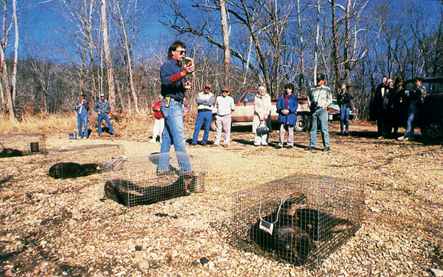Header photo courtesy of Pennsylvania Game Commission
FURBEARER MANAGEMENT IN THE NORTHEAST
CONSERVEWILDLIFE.ORG
BENEFITS OF TRAPPING
Protecting Property & Public Safety
Calamity by Design: The Prohibition of Regulated Trapping — The Chelmsford Example
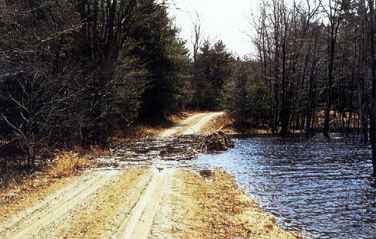
Chelmsford, Massachusetts is located about 20 miles northwest of the city of Boston and encompasses approximately 23 square miles. The first European settlement in the area was a fur trading post, established due to the abundance of beaver in the local wetlands. Today there are still approximately 870 acres of wetlands within the town, but it is now a densely settled suburban community with over 32,000 residents (1,357 per square mile). Local government is conducted through open town meetings and administered by five elected selectman.
During the late 1980s, a national animal rights group developed a "model" for getting trapping ban initiatives passed by town, county and state governments. The model guidelines encouraged animal rights activists to disguise regulated trapping as a public safety/animal welfare issue. Exactly in accordance with such direction, an article to ban trapping was introduced at a Chelmsford town meeting in 1988.
State wildlife experts reminded residents that regulated trapping was not a public safety issue, and warned that if regulated trapping were banned, there would be numerous undesirable consequences in the form of property damage and wildlife habitat degradation. Despite the warnings, the article was passed, and the trapping of furbearing mammals within the town was prohibited.
Prior to passage of the trapping ban, there were usually one to three complaints of beaver damage in the town each year. Following the ban, the beaver population, unchecked, began to grow rapidly, and the animals began to move into many previously unoccupied wetlands. Beaver dams began to flood houses and roadways. In 1992, state wildlife biologists working at the request of town officials investigated 25 beaver complaint sites. Two of these complaint sites were municipal wells which had been shut down (at a cost of $25,000) because of beaver flooding, and four other municipal wells were threatened. Individual landowners in town had incurred tens of thousands of dollars in damages to private wells, septic systems, lawns and roadways. The increasing beaver population and increasing property damage were directly related to the decision of the town's citizens to ban regulated trapping and allow uncontrolled beaver population growth to commence.
State wildlife officials offered the town several recommendations: (1) use water flow devices to reduce flooding in some areas, (2) get permits to breach beaver dams in other locations, and (3) rescind the trapping ban bylaw to allow beaver populations to be brought under control. The town took positive steps to implement these recommendations. The state issued permits to breach beaver dams that were disabling wells and septic systems. State wildlife personnel installed water flow devices (beaver pipes) at two sites and assisted town water department personnel with a third pipe. At a special town meeting in September 1992, town citizens voted by a two-to-one margin to allow regulated public trapping to resume. During the regular trapping season later that fall and winter, four fur harvesters working with homeowners and town officials removed 87 beaver. Today, with public, regulated trapping restored, Chelmsford again has only one to three beaver complaints per year. These are handled as they had been prior to 1988, under an effective and responsible program incorporating state wildlife officials and local fur harvesters.
In Massachusetts, the state wildlife agency has a well developed management plan for beaver. The goals of this plan are to manage beaver resources as assets, not liabilities; perpetuate beaver populations for future generations; keep the beaver population at levels compatible with suitable habitat; minimizing property damage caused by beaver; manage beaver for their positive wetland values, and allow people the sustainable use of public resources.
Chelmsford residents were confounded by animal rights activists who had promised in 1988 and again in 1992 to install water flow devices and proposed to "sterilize" beaver in the town (a technique that is not feasible on a free-roaming beaver population). Over the four years of the trapping ban, the activists never acted on their promises and were never held accountable for the statements they put forth.
During the late 1980s, a national animal rights group developed a "model" for getting trapping ban initiatives passed by town, county and state governments. The model guidelines encouraged animal rights activists to disguise regulated trapping as a public safety/animal welfare issue. Exactly in accordance with such direction, an article to ban trapping was introduced at a Chelmsford town meeting in 1988.
State wildlife experts reminded residents that regulated trapping was not a public safety issue, and warned that if regulated trapping were banned, there would be numerous undesirable consequences in the form of property damage and wildlife habitat degradation. Despite the warnings, the article was passed, and the trapping of furbearing mammals within the town was prohibited.
Prior to passage of the trapping ban, there were usually one to three complaints of beaver damage in the town each year. Following the ban, the beaver population, unchecked, began to grow rapidly, and the animals began to move into many previously unoccupied wetlands. Beaver dams began to flood houses and roadways. In 1992, state wildlife biologists working at the request of town officials investigated 25 beaver complaint sites. Two of these complaint sites were municipal wells which had been shut down (at a cost of $25,000) because of beaver flooding, and four other municipal wells were threatened. Individual landowners in town had incurred tens of thousands of dollars in damages to private wells, septic systems, lawns and roadways. The increasing beaver population and increasing property damage were directly related to the decision of the town's citizens to ban regulated trapping and allow uncontrolled beaver population growth to commence.
State wildlife officials offered the town several recommendations: (1) use water flow devices to reduce flooding in some areas, (2) get permits to breach beaver dams in other locations, and (3) rescind the trapping ban bylaw to allow beaver populations to be brought under control. The town took positive steps to implement these recommendations. The state issued permits to breach beaver dams that were disabling wells and septic systems. State wildlife personnel installed water flow devices (beaver pipes) at two sites and assisted town water department personnel with a third pipe. At a special town meeting in September 1992, town citizens voted by a two-to-one margin to allow regulated public trapping to resume. During the regular trapping season later that fall and winter, four fur harvesters working with homeowners and town officials removed 87 beaver. Today, with public, regulated trapping restored, Chelmsford again has only one to three beaver complaints per year. These are handled as they had been prior to 1988, under an effective and responsible program incorporating state wildlife officials and local fur harvesters.
In Massachusetts, the state wildlife agency has a well developed management plan for beaver. The goals of this plan are to manage beaver resources as assets, not liabilities; perpetuate beaver populations for future generations; keep the beaver population at levels compatible with suitable habitat; minimizing property damage caused by beaver; manage beaver for their positive wetland values, and allow people the sustainable use of public resources.
Chelmsford residents were confounded by animal rights activists who had promised in 1988 and again in 1992 to install water flow devices and proposed to "sterilize" beaver in the town (a technique that is not feasible on a free-roaming beaver population). Over the four years of the trapping ban, the activists never acted on their promises and were never held accountable for the statements they put forth.
Protection of Wetlands
Protecting America's Important Wetland's with Regulated Trapping
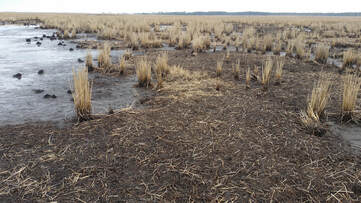
The Chesapeake Bay is an economic, cultural and natural treasure. It is the largest estuary in the United States. The wetlands of the bay and its tributaries provide habitat for various birds and other wildlife. Its marshes afford critical nursery environments for economically important fish and shellfish.
The Chesapeake Bay watershed is home to over 18 million people. It strengthens local economies through commercial fishing, tourism, recreational benefits, and real estate industries at an estimated $33 billion per year.
Nutria (Myocastor coypus) are a large, invasive, semi-aquatic rodent introduced to the Chesapeake Bay in the 1940’s. They are originally from South America and were imported for fur farming. Once the fur market collapsed, nutria were either intentionally released or escaped from farming facilities. With limited natural predators, populations quickly exploded and expanded within the region.
The Chesapeake Bay watershed is home to over 18 million people. It strengthens local economies through commercial fishing, tourism, recreational benefits, and real estate industries at an estimated $33 billion per year.
Nutria (Myocastor coypus) are a large, invasive, semi-aquatic rodent introduced to the Chesapeake Bay in the 1940’s. They are originally from South America and were imported for fur farming. Once the fur market collapsed, nutria were either intentionally released or escaped from farming facilities. With limited natural predators, populations quickly exploded and expanded within the region.
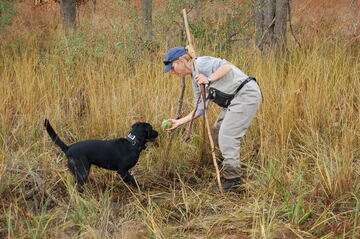
Since their release, nutria have destroyed thousands of acres of wetlands through their destructive habitats. Blackwater National Wildlife Refuge, located in Cambridge, MD, experienced losses of over 5000 acres of wetlands due primarily to nutria. In an economic study by Southwick Associates (employed by Maryland Department of Natural Resources) it was predicted nutria would cause losses of $35 million annually.
In 1993, the Maryland Department of Natural Resources (MD DNR) and the U.S. Fish and Wildlife Service (USFWS) established the first multi-agency task force to investigate potential approaches to combat nutria populations. In 1995, the MD DNR and USFWS, with assistance and direction from the U.S. Geological Survey (USGS), initiated a study that statistically addressed if nutria were the main cause of marsh loss and if the marsh would recover with their removal. The study provided scientific support that nutria were the primary cause of recent marsh loss, and determined that the damaged marshes would recover within one year if nutria were removed.
In 1993, the Maryland Department of Natural Resources (MD DNR) and the U.S. Fish and Wildlife Service (USFWS) established the first multi-agency task force to investigate potential approaches to combat nutria populations. In 1995, the MD DNR and USFWS, with assistance and direction from the U.S. Geological Survey (USGS), initiated a study that statistically addressed if nutria were the main cause of marsh loss and if the marsh would recover with their removal. The study provided scientific support that nutria were the primary cause of recent marsh loss, and determined that the damaged marshes would recover within one year if nutria were removed.
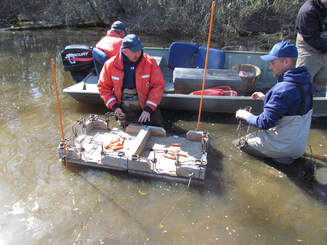
In April 2002, the eradication phase was fully implemented with the formation of the Chesapeake Bay Nutria Eradication Project (CBNEP). The USDA Animal and Plant Health Inspection Service (APHIS) - Wildlife Services, assumed primary responsibility for project implementation. Since inception, the CBNEP has removed almost 14,000 nutria, resulting in the protection of ¼ million acres of wetland habitats. Federal, State and over 400 private land owners have been assisted by the effort and native wildlife populations have rebounded as a result.
Over the last 17 years, CBNEP developed new techniques for detecting and removing nutria and has assisted (technical support) programs throughout the United State and across the world. In the later stages of eradication when nutria were in low densities, CBNEP created the nutria detector dog program. This program used government owned and trained canines to detect nutria scat (something that could easily be collected and stored for training) to help verify marshes were free of nutria.
The CBNEP expanded its eradication program far beyond the original efforts at Blackwater National Wildlife Refuge. The last confirm nutria was on May 7, 2015 and so the project is now in its final phase of confirming eradication of the entire Delmarva Peninsula. That requires staff revisit previously trapped watersheds multiple times over several years to detect and remove any nutria that were not previously found. The CBNEP has also contracted with Landcare Research (New Zealand) to analyze monitoring data in an effort to help provide statistical confidence to nutria eradication.
Over the last 17 years, CBNEP developed new techniques for detecting and removing nutria and has assisted (technical support) programs throughout the United State and across the world. In the later stages of eradication when nutria were in low densities, CBNEP created the nutria detector dog program. This program used government owned and trained canines to detect nutria scat (something that could easily be collected and stored for training) to help verify marshes were free of nutria.
The CBNEP expanded its eradication program far beyond the original efforts at Blackwater National Wildlife Refuge. The last confirm nutria was on May 7, 2015 and so the project is now in its final phase of confirming eradication of the entire Delmarva Peninsula. That requires staff revisit previously trapped watersheds multiple times over several years to detect and remove any nutria that were not previously found. The CBNEP has also contracted with Landcare Research (New Zealand) to analyze monitoring data in an effort to help provide statistical confidence to nutria eradication.
The Benefits of Regulated Trapping – The U.S. Fish and Wildlife Service
U.S. Fish and Wildlife Service - Supporting Conservation and Regulated Trapping
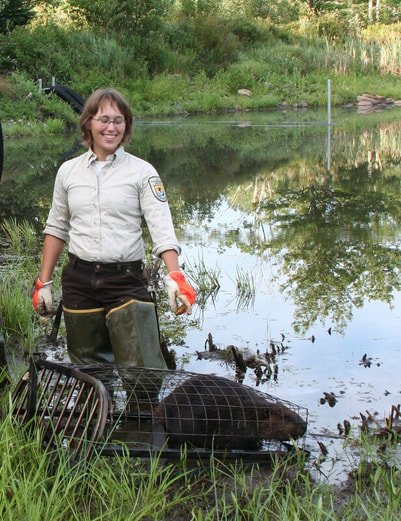
The U.S. Fish and Wildlife Service is a federal agency with broad authority over migratory birds, federally listed endangered species, and a network of federal land known as the National Wildlife Refuge System. The Service also has several programs that partner with state fish and wildlife agencies and non-governmental organizations to conserve fish and wildlife and connect people with nature.
The Service's approach to regulated trapping is a legitimate activity, by which the public harvests wildlife. As with state fish and wildlife agencies, trapping is a method of harvesting wildlife under scientific principles, with regulations regarding appropriate techniques and these laws are enforced by state and federal agents. Additionally, the Fish and Wildlife Service, use trapping as a cost-effective method (compared to hunting or chemical control) to manage wildlife. Trapping helps protect endangered species and migratory birds, restore species in decline, prevent and reduce property damage, and control destructive invasive species.
Regulated trapping is an important tenant of conservation and education programs in a variety of Service programs including the following:
Wildlife and Sport Fish Restoration Program (WSFR): The WSFR Program was established in 1937 and works in partnership with state fish and wildlife agencies. WSFR funding has also established a universal trapper education program that is offered nationally (Trapper Ed Course) to the public (free of charge). WSFR also works with state fish and wildlife agencies to support and fund annual trapper education courses, offered free to the public in 28 states. Funding has also been used by state fish and wildlife agencies to conduct research on trapping devices for efficacy, safety, selectivity, humaneness and practicality. This funding has resulted in the development of Best Management Practices for trapping (“Furbearer Management and Best Management Practices for Trapping”).
Migratory Bird Program (MB): The MB Program supports migratory bird conservation and management through effective partnerships. Predation has been identified as one of the four primary threats to shorebird populations in the Atlantic Flyway. Working with state, federal and NGO partners, MBs have helped to develop guidance and best practices for reducing predation threats to shorebirds. The use of modern traps and trapping has been identified as the most effective approach for reducing predator abundance at local levels and increasing the hatching and fledging success of shorebirds in key nesting areas within the flyway.
Ecological Services (ES): The ES Program provides planning, partnering and technical assistance in the protection and restoration of federally listed endangered species. For species such as sea turtles in the Southeastern U.S. and Gulf Coast Regions, the use of traps and trapping are important to ensure the successful hatching of sea turtles on major nesting beaches. In the Northeast, traps have also played a key role in working with wildlife experts in the scientific community to capture, relocate and conduct research to better understand key habitats needed for restoring New England Cottontails within their native range.
Black-footed Ferrets are considered one of the most endangered mammals in the United States. Once thought to be extinct, the last remaining ferrets were captured in Wyoming in the early 1980’s with the use of traps and brought to a facility to begin a long-term captive-rearing program. Sylvatic plague continues to present challenges to their survival and recovery. While a vaccination for this disease has been developed, protection against the plague is difficult to achieve in wild ferrets, which must be trapped 2-4 weeks apart to receive 2 effective doses of the vaccine to ensure their survival. Regulated trapping plays a critical role in various conservation initiatives related endangered species conservation.
National Wildlife Refuge System (NWRS): Along with many other tools of professional wildlife management, the NWRS often relies on regulated trapping by the public and trained wildlife professionals as one of many different management approaches for maintaining the flow of water, controlling invasive species, restoring species such as New England Cottontail, Black-footed ferrets, and reducing predation on NWRS-managed lands. Coastal islands provide critical nesting locations for many species of migratory birds such as Atlantic puffins and terns (Least, Common and Arctic). Efforts to protect seabird-nesting colonies to ensure adults can raise young each year is a long-term, annual investment of staff time and resources. Species such as mink and river otters that occasionally reach these islands can quickly decimate large numbers of breeding adult seabirds, setting back long-term efforts to maintain or increase their populations.
The Service's approach to regulated trapping is a legitimate activity, by which the public harvests wildlife. As with state fish and wildlife agencies, trapping is a method of harvesting wildlife under scientific principles, with regulations regarding appropriate techniques and these laws are enforced by state and federal agents. Additionally, the Fish and Wildlife Service, use trapping as a cost-effective method (compared to hunting or chemical control) to manage wildlife. Trapping helps protect endangered species and migratory birds, restore species in decline, prevent and reduce property damage, and control destructive invasive species.
Regulated trapping is an important tenant of conservation and education programs in a variety of Service programs including the following:
Wildlife and Sport Fish Restoration Program (WSFR): The WSFR Program was established in 1937 and works in partnership with state fish and wildlife agencies. WSFR funding has also established a universal trapper education program that is offered nationally (Trapper Ed Course) to the public (free of charge). WSFR also works with state fish and wildlife agencies to support and fund annual trapper education courses, offered free to the public in 28 states. Funding has also been used by state fish and wildlife agencies to conduct research on trapping devices for efficacy, safety, selectivity, humaneness and practicality. This funding has resulted in the development of Best Management Practices for trapping (“Furbearer Management and Best Management Practices for Trapping”).
Migratory Bird Program (MB): The MB Program supports migratory bird conservation and management through effective partnerships. Predation has been identified as one of the four primary threats to shorebird populations in the Atlantic Flyway. Working with state, federal and NGO partners, MBs have helped to develop guidance and best practices for reducing predation threats to shorebirds. The use of modern traps and trapping has been identified as the most effective approach for reducing predator abundance at local levels and increasing the hatching and fledging success of shorebirds in key nesting areas within the flyway.
Ecological Services (ES): The ES Program provides planning, partnering and technical assistance in the protection and restoration of federally listed endangered species. For species such as sea turtles in the Southeastern U.S. and Gulf Coast Regions, the use of traps and trapping are important to ensure the successful hatching of sea turtles on major nesting beaches. In the Northeast, traps have also played a key role in working with wildlife experts in the scientific community to capture, relocate and conduct research to better understand key habitats needed for restoring New England Cottontails within their native range.
Black-footed Ferrets are considered one of the most endangered mammals in the United States. Once thought to be extinct, the last remaining ferrets were captured in Wyoming in the early 1980’s with the use of traps and brought to a facility to begin a long-term captive-rearing program. Sylvatic plague continues to present challenges to their survival and recovery. While a vaccination for this disease has been developed, protection against the plague is difficult to achieve in wild ferrets, which must be trapped 2-4 weeks apart to receive 2 effective doses of the vaccine to ensure their survival. Regulated trapping plays a critical role in various conservation initiatives related endangered species conservation.
National Wildlife Refuge System (NWRS): Along with many other tools of professional wildlife management, the NWRS often relies on regulated trapping by the public and trained wildlife professionals as one of many different management approaches for maintaining the flow of water, controlling invasive species, restoring species such as New England Cottontail, Black-footed ferrets, and reducing predation on NWRS-managed lands. Coastal islands provide critical nesting locations for many species of migratory birds such as Atlantic puffins and terns (Least, Common and Arctic). Efforts to protect seabird-nesting colonies to ensure adults can raise young each year is a long-term, annual investment of staff time and resources. Species such as mink and river otters that occasionally reach these islands can quickly decimate large numbers of breeding adult seabirds, setting back long-term efforts to maintain or increase their populations.
Research & Reintroduction
Trapping for Research & Reintroduction Programs
|
Foothold traps have been - and continue to be - used successfully to capture a wide variety of wildlife species in order to study the characteristics of individuals and populations. In fact, research conducted with the use of foothold traps has provided much of the information leading to our present understanding of biological and ecological phenomena. Wildlife biologists typically use these traps to capture animals that are then carefully monitored, revealing information on their movements, habitat requirements and reproduction that can be acquired no other way.
The river otters pictured at right were all captured with foothold traps in marshes in Louisiana and are being released unharmed into new areas to restore otter populations where they no longer occur. Similar otter restoration programs have been successful in Pennsylvania, maryland, New York and West Virginia. Many midwestern states now have thriving river otter populations thanks to capture and reintroduction efforts made possible by the use of foothold traps. |
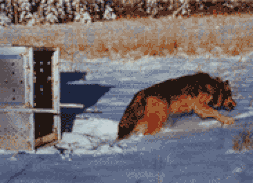
Foothold traps are generally the only effective traps for catching canid species such as wolves, coyotes and foxes. As a result, they are almost always the trap of choice when any of these famously wary species are targeted for capture by either the public or wildlife researchers. An example is the ongoing, important role foothold traps are playing in the restoration of several endangered wolf populations. Red Wolves are captured, examined and relocated to reestablish new populations; Mexican Wolves are captured for a captive breeding program that will provide healthy animals for a reintroduction program; and stock-killing Gray Wolves are captured and relocated to reduce damage and maintain public support for their continuing restoration.
Protection of Rare Species
Trapping Protects Rare & Endangered Species
Foothold traps are sometimes used to capture rare or endangered species unharmed so that the animals can be reintroduced into favorable habitats to reestablish healthy populations. However, foothold traps also play an important role in protecting the health and viability of many established or newly reestablished populations of rare and endangered species. Foothold traps are particularly important management tools for protecting rare and endangered species from undesirable levels of predation.
The following is a partial list of endangered or threatened plant, reptile, bird and mammal species in the U.S. which are being protected and managed through the use of foothold traps:
The following is a partial list of endangered or threatened plant, reptile, bird and mammal species in the U.S. which are being protected and managed through the use of foothold traps:
Rare Species Under Restoration/Protection |
Species Trapped to Aid Restoration |
Pink Lady Slipper |
Beaver |
Pitcher Plant |
Beaver |
Desert Tortoise |
Coyote |
Sea Turtle |
Raccoon |
Aleutian Canada Goose |
Arctic Fox |
Attwater's Prairie Chicken |
Coyote |
Brown Pelican |
Coyote |
Mississippi Sandhill Crane |
Coyote |
Alabama Beach Mouse |
Red Fox |
Columbian White-tailed Deer |
Coyote |
San Joaquin Kit Fox |
Coyote |
Whooping Crane |
Coyote, Red Fox |
Least Tern |
Red Fox, Raccoon, Coyote, Opossum |
Black-footed Ferret |
Coyote (taken for disease monitoring) |
Piping Plover |
Red Fox, Raccoon, Mink, Striped Skunk |
Spiny Soft Shell Turtle |
Raccoon |
The target animals trapped during these operations to reduce habitat damage or predation on the rare species are either removed or relocated after capture. The trapping may be carried out by federal, state or provincial wildlife biologists and animal control agents or by private, regulated trappers.

